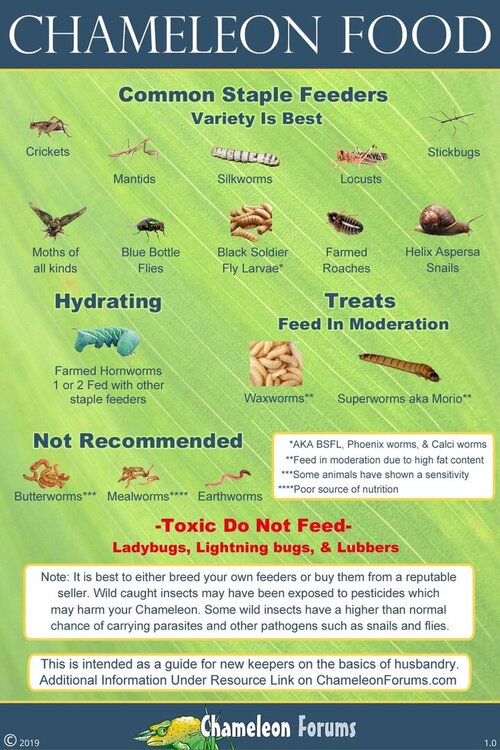Agathe00
New Member
Hello ! I got my first reptile a few days ago. It is a Chameleo calyptratus and it is a male. I dream of breeding reptiles and insects, I would like to give them the best life possible. So to start I got this beautiful chameleon. Of course, I read a lot but the theory is not the same as the practice haha. So I have some questions. First of all I'm not sure that the lamp I installed is far enough from the fence, how far should I put between the bulb and the fence? Also, I was told to give vitamins once every 10 days and calcium 2-3 times a week, can I put them in the insect food? How many insects should I give him per day, I read that I should give 6-7 crickets per day, 2-3 crickets per week and 1 to 3 other insects per week, is this correct? How often do chameleons poop? And finally he stays under the lamp a lot, flattening slightly, is this normal? In addition it is colored green with white and gray spots.







